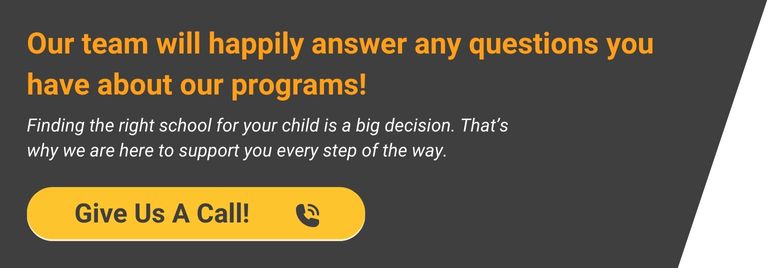When your child is struggling in school, it’s natural to start looking at ways you can help them. But you don’t have to figure it out alone.
Many children have different ways of learning, thinking, and processing to the “norm,” and thankfully, there are legal protections in place to ensure they get the support they need to succeed at school.
These protections include:
- 504 plans: for students with learning differences or other disabilities who need just a few practical adjustments.
- IEPs: for students with more specialized educational needs.
Sometimes, small changes in the classroom are all a child needs, and this is where 504 plans come in. Other times, children need more specialized support, which is when an IEP is more appropriate.
We know that understanding the difference between IEPs and 504 plans can be confusing. So in this article, we’ll walk you through all the basics:
- What a 504 plan is
- Who it’s for
- Typical 504 accommodations
- How to get your child evaluated for a 504 or IEP, and more.

What is a 504 plan?
504 plans are one of the most common forms of school support for students with disabilities or learning difficulties—and they can make a real difference in helping children succeed at school.
They come under Section 504 of the Rehabilitation Act, a civil rights law designed to protect students from discrimination and ensure they have equal access to education. This means that every child with a disability or condition that affects how they learn, focus, or participate in class has a legal right to a 504 plan.
In simple terms, a 504 plan is an official plan created specifically for a child, by their school, to help them succeed in the classroom.
Every student’s 504 plan is unique, and lists the specific adjustments—known as accommodations—that will help them learn and participate fully in school. This might include things like where they sit in class, access to certain technology, or extra time during tests.
It’s important to know that 504 plans are not part of special education, and they don’t include specialized teaching. Instead, they’re about making sure students in mainstream classrooms can learn in the way that works best for them.
Which students can receive a 504 plan?
Many families are surprised to learn that there’s no strict list of qualifying conditions for a 504 plan. That’s because the definition of disability under Section 504 is quite broad.
To qualify, a student must have a “physical or mental impairment that substantially limits one or more major life activities.” Put simply, that means that if a child has a condition that affects things that we do most days—like learning, reading, concentrating, communicating, managing emotions, and even eating or sleeping—they may be eligible.
Because of this wide scope, students with many different needs can qualify for a 504 plan. Some common examples include:
- ADHD
- Autism
- Dyslexia or other learning differences
- Diabetes, asthma, or epilepsy
- Vision or hearing challenges
- Physical disabilities that limit mobility or function
- Temporary injuries, such as a broken arm
However, it’s important to know that having a medical diagnosis does not automatically mean a student can receive a 504 plan. For example, if a child’s condition is very mild and doesn’t significantly impact how they function at school, they might not meet the criteria.We’ll explain how students get evaluated for 504 plans later on, but essentially, it’s up to the school to decide if a student qualifies.
What accommodations are included in a 504 plan?
504 plans are all about practical changes (known as “accommodations”) that help students with different needs to learn successfully in a general education classroom.
Accommodations can be as simple as changing a seating arrangement, or as structured as providing regular breaks or assistive technology. Every plan is tailored to the student’s individual needs.
Some common types of 504 accommodations include:
- Environmental changes: like sitting near the front of the class, using noise-canceling headphones, or taking tests in a quiet space.
- Instructional supports: such as access to lesson outlines or having instructions given both verbally and in writing.
- Assistive technology: tools like text-to-speech software, audiobooks, or devices that help students write or type.
- Schedule adjustments: including regular breaks, extra time on tests or assignments, or help with transitions between activities.
In some cases, a 504 plan might also include related services like occupational therapy or counseling. And while it’s rare, some plans may include modifications—changes to what a student is expected to learn. But this is not the norm, and is more commonly part of an IEP (Individualized Education Program).
Essentially, every 504 plan looks different, because every student is different. But the goal is always the same: to give students the support they need to overcome barriers and do their best in the classroom.
IEP vs 504 plan — what’s the difference?
A common point of confusion is the difference between IEPs (Individualized Education Programs) and 504 plans, and knowing which your child may need.
Both are designed to support students with disabilities to succeed in school, but they’re designed for different needs and follow different rules.
The simplest way to understand it is this:
- A 504 plan is for students who can learn the same material as their peers, but need some practical adjustments to help them do it.
- An IEP is for students who need special education services, other specialized support, and may also need changes to what they’re expected to learn.
Here’s a quick comparison to highlight the key differences:
504 Plan
- For students with any condition or disability that affects their ability to learn or focus
- Civil rights law (Section 504 of the Rehabilitation Act)
- Includes accommodations only (changes to how a student learns)
- Keeps the student in the general education setting, with supports
- No formal learning goals required
- Reviewed as needed
IEP
- For students who need special education due to a qualifying disability under IDEA
- Special education law (IDEA: The Individuals with Disabilities Education Act)
- Includes accommodations and modifications (changes to how and what a student learns), plus specialized instruction and services
- May include special education classes or services in a mainstream school, or an alternative school
- Includes measurable learning goals and regular progress reviews
- Reviewed at least once a year, with full evaluation every 3 years
A key point to realize is that students will usually have just one or the other.
If a student qualifies for an IEP, they don’t need a 504 plan. The IEP will already cover everything a 504 would—and more.
However, if your child has a 504 plan but you feel they need more support or their needs have become more complex, it’s worth looking into whether they will qualify for an IEP.
How can a student get evaluated for a 504 plan or IEP?
If you think your child might benefit from a 504 plan or an IEP, the first step is to talk with their school. Often, a teacher or school counselor will suggest an evaluation based on what they’re seeing in the classroom. But as a parent, you can also request an evaluation at any time.
Once a request is made, the school will begin the process to determine whether a 504 plan or an IEP might be appropriate.
For a 504 plan, the process is simpler and less formal. The school will review things like medical records, academic history, teacher observations, and your input as a parent to decide if your child qualifies. If they do, you’ll then decide together what supports are needed.
A formal evaluation isn’t needed to get a 504 plan, but many schools still suggest one to ensure they’re fully understanding your child’s needs.
For an IEP, the process is more in-depth. It begins with a formal evaluation, which requires your written consent.
This evaluation is carried out by specialists and looks closely at how your child is learning and functioning at school. Once completed, a team—which includes your child’s teachers, specialists, school staff, and you—will meet to review the results and decide whether your child qualifies for an IEP.
If they do, you’ll all work together to create your child’s individualized plan, with specific goals, services, and ways to measure progress.
It’s worth noting that if your child doesn’t qualify for an IEP, a 504 plan will usually be suggested instead.
No matter which path you’re exploring, families play a vital role. Your insights, concerns, and examples from home can all help the school team better understand how to support your child.
Is a 504 plan enough to get enrolled at EA Schools?
This is a question we’re asked often, and the short answer is no—a 504 plan by itself does not qualify a child for enrollment at EA Schools.
EA is a specialized learning environment designed for students who need special education services, which are outlined through an IEP. Since a 504 plan is not considered special education, it generally isn’t enough to qualify a student for enrollment at EA.
That said, there are a few exceptions:
- If a student is referred to EA by their home school district, a 504 plan may be sufficient.
- If a student has a clinical autism diagnosis, they may qualify through an Autism Education Plan (AEP), making them eligible for the Autism Scholarship.
- If a student is referred by REACH Behavioral Health, the IEP requirement may sometimes be waived.
In most cases, however, an IEP is required for enrollment at EA Schools—especially when parents are initiating the process themselves.
If you’re unsure about your child’s situation, we’re always happy to talk it through and help you understand what’s needed.

Get help navigating IEPs vs 504 plans in Ohio
Understanding the world of 504 plans, IEPs, and educational supports can feel overwhelming at first—but you don’t have to figure it out alone.
A 504 plan for students with disabilities and learning differences is an important tool for leveling the playing field and ensuring they can learn in a way that works for them. It doesn’t include special education, but it can make a big difference.
If you think your child could benefit from a 504 plan, don’t hesitate to reach out to their school to get the ball rolling.
Or if you think your child may need more than what a 504 plan can offer, or if you’re curious about the support available at EA Schools, we’re here to help guide you.
Whether you’re just starting your journey or ready to take the next step, we’re here to answer questions and provide support every step of the way.
